






Hello, I am Cesar Piedra an artist and curator working out of Reno, Nevada.
I have compiled examples of projects and behind the scenes progress images to share aspects of my practice with you.
Interviews
Curation







Best of Show
2024
Red Mountain Gallery Truckee Meadows Community College
My curatorial practice is informed by conversation, be it with friends, peers, and mentors. The exchange of ideas, perspectives, and collaboration are the base of my curatorial projects. Best of Show is an ode to the conversations, had with Kara Savant, Thomas Drakulich, and Richard Jackson. For a time, we shared studio space where we challenged, experimented, and critiqued each other's work. Best of Show grants the viewer access to these moments of conversation and collaboration and permits them to choose which of the artists is Best of Show.
Born and raised in Reno, NV, Tom Drakulich is a process-based abstractionist whose art practice navigates the play between the unique and the familiar. Having grown up exploring the Nevada landscape, he is influenced by the ways in which the physicality and form of the desert can be connected to the aesthetics of the body and relationships concerning human nature.
Tom received his A.A. in art history from Truckee Meadows Community College, his B.A. in Criminal Justice from the University of Nevada, Reno, and his M.F.A. from the University of Nevada, Reno. In 2019, he was selected as the City of Reno’s inaugural City Artist.
Kara Savant is a fifth generation Nevadan, strongly rooted in her home state. She currently works for the University Sculpture Department to put food on the table for her wife, cat, and pup. As a child, Kara spent countless hours with her six siblings constructing forts out of recycled wood and hardware found out in the rural hills of Elko. Once she attended college, she replaced the sagebrush covered hills with the art studios found at both TMCC and UNR. There she met Tom, Richard, and Cesar and their tongue-in-cheek repertoire was born. Her infatuation of creating something out of nothing translated into her interdisciplinary practice where she now creates work that speaks to her upbringing, Nevada, and the art community that continues to inspire her.
Richard N Jackson hails from the great state of Nevada. He was born in Reno and has been a resident of that great city ever since. He received his BA (with an emphasis in drawing) in 1991. Richard started his Ceramic Sculpture work in 1988 under the tutelage of Fred Reid. Richard accepted a position as lab technician at UNR in 2012 and has been there ever since. Richard is incredibly proud of the students who have darkened the studio doors, and especially honored to show next to this fine group of artists. Richard’s current body of work reflects the inspiration and influences of the artists in this show. This work is centered around years of our shared conversations centering around life, relationships, art, music. ENJOY!
Cesar Piedra is an interdisciplinary artist, born in southern California and raised in northern Nevada. He received an Associates of Art in Fine Arts from TMCC a Bachelor of Fine Arts with an emphasis in ceramics with a minor in art history at the University of Nevada Reno. His Art practice is informed by the rich history of the Mesoamerican and Mexican-American cultures. Piedra’s mash-up of Mesoamerican and contemporary subject matter and iconography allows him to make connections to the ancestral culture of Mexico to share, critique, and explore conversations about the evolution of culture.






































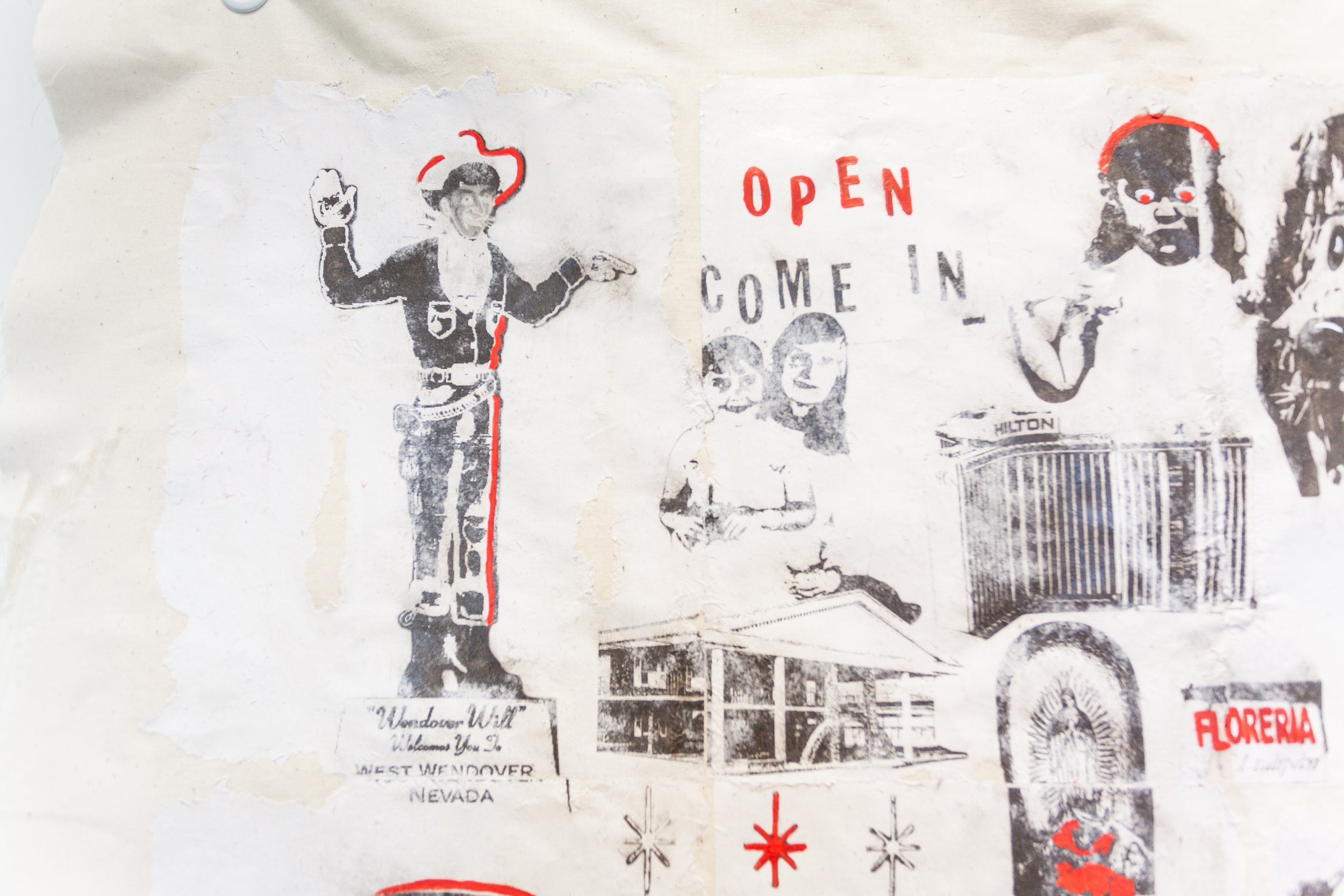






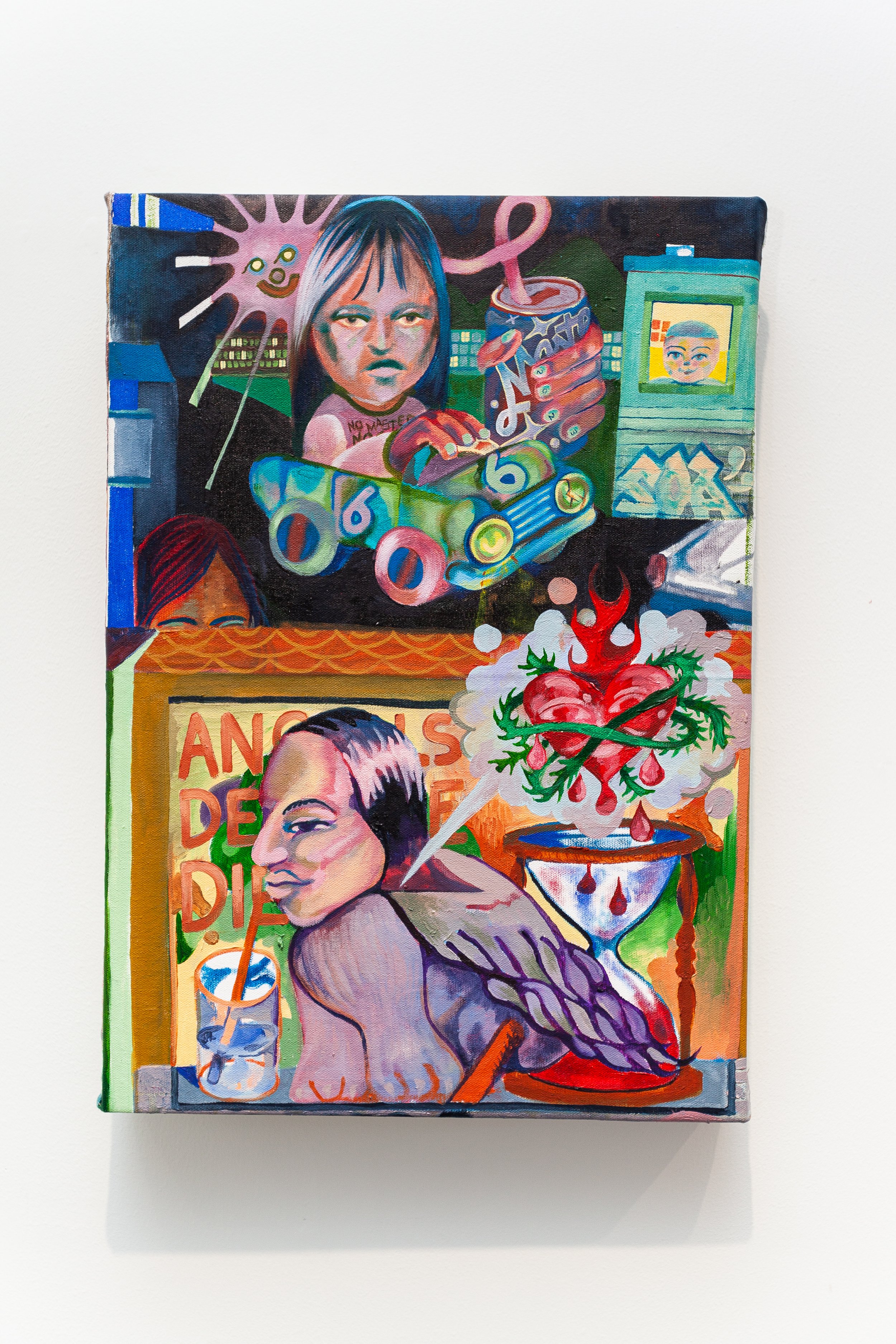









































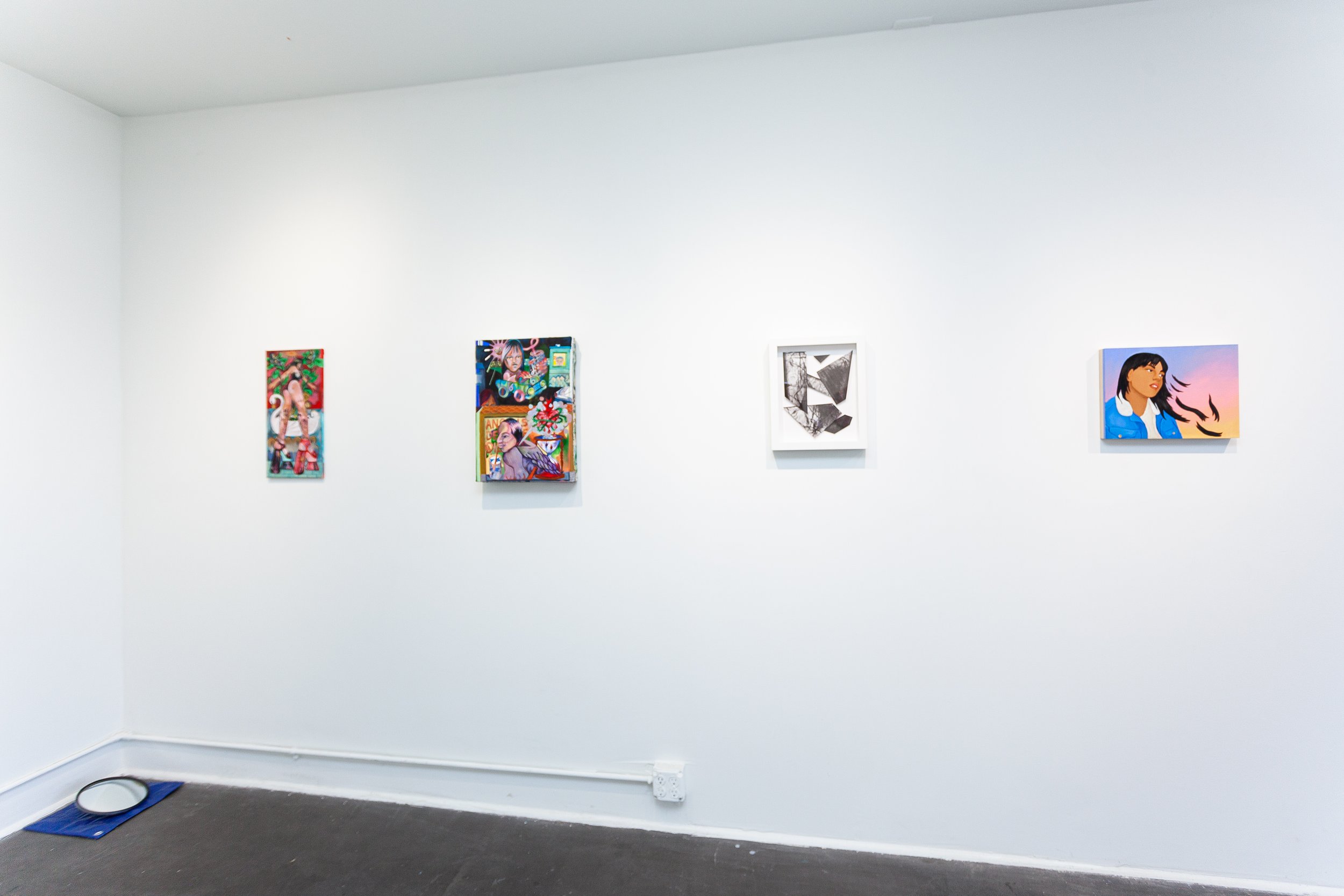







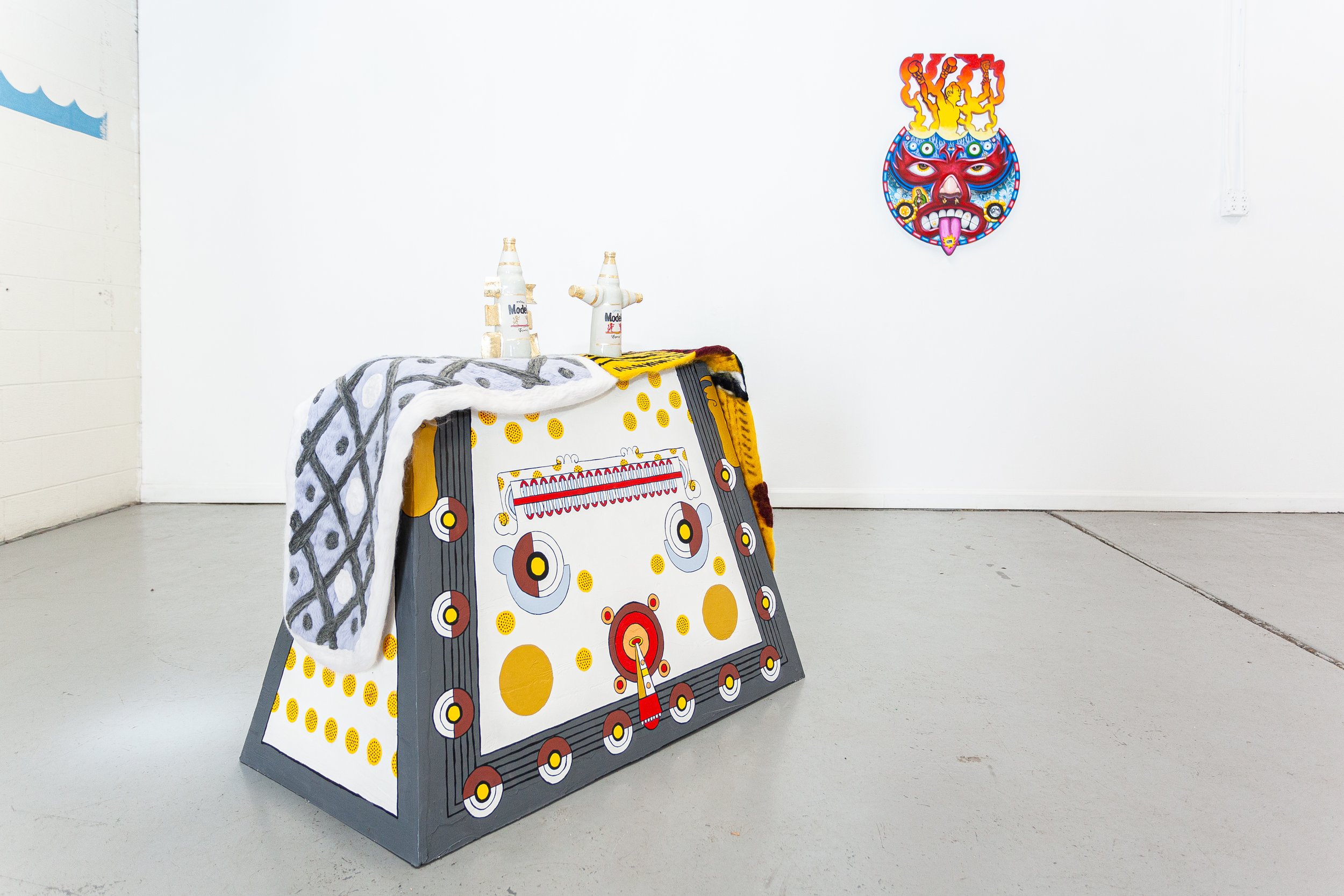

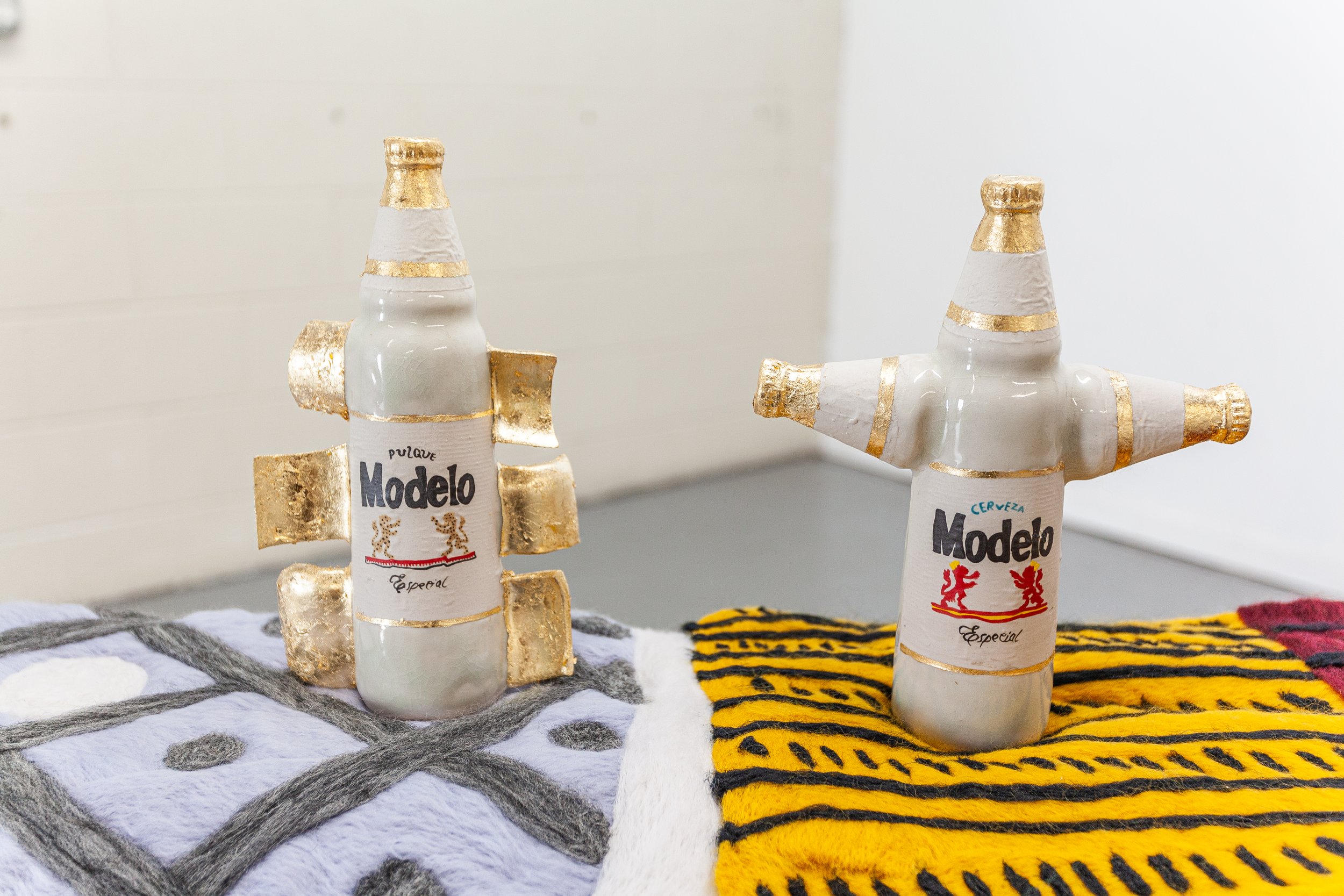

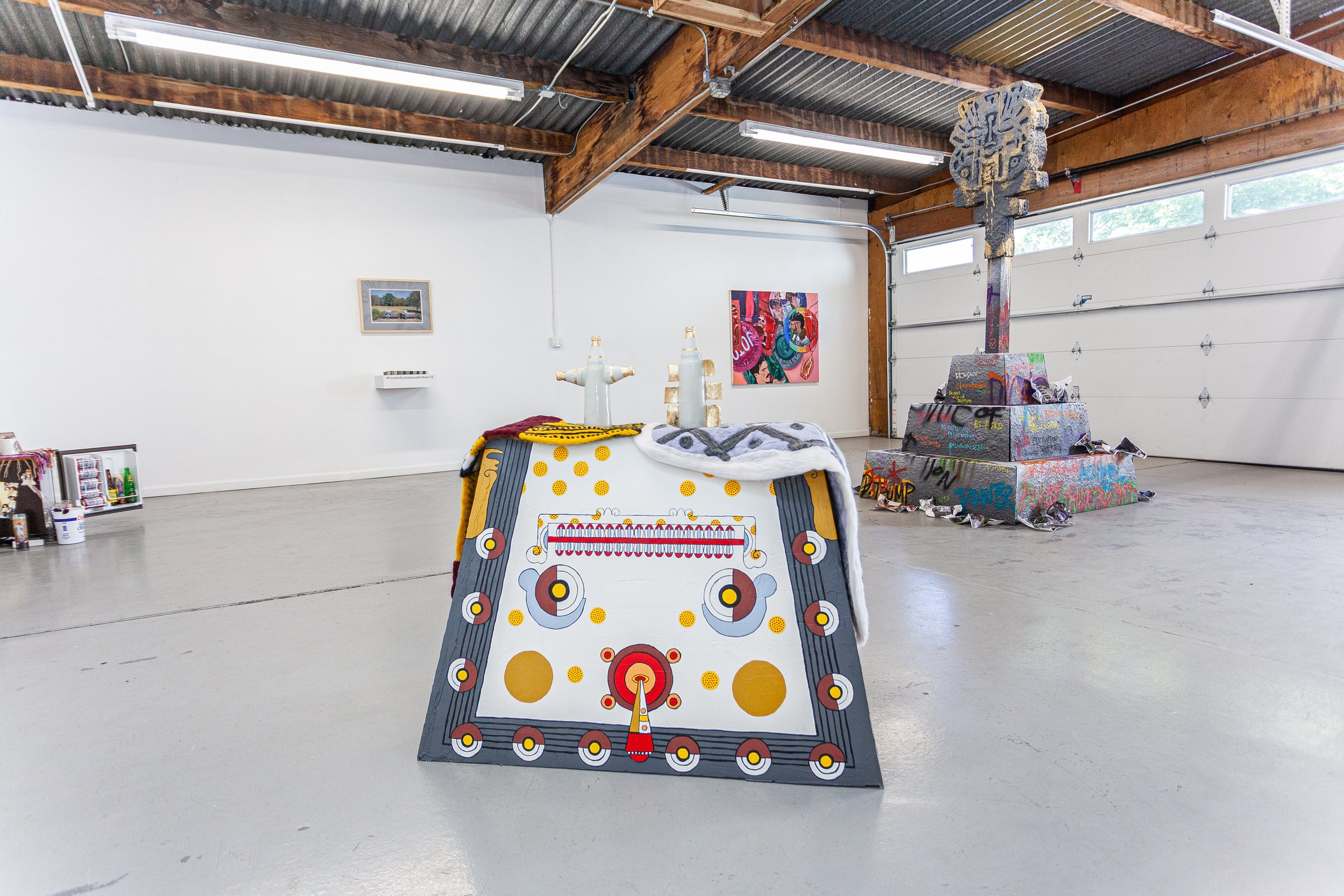

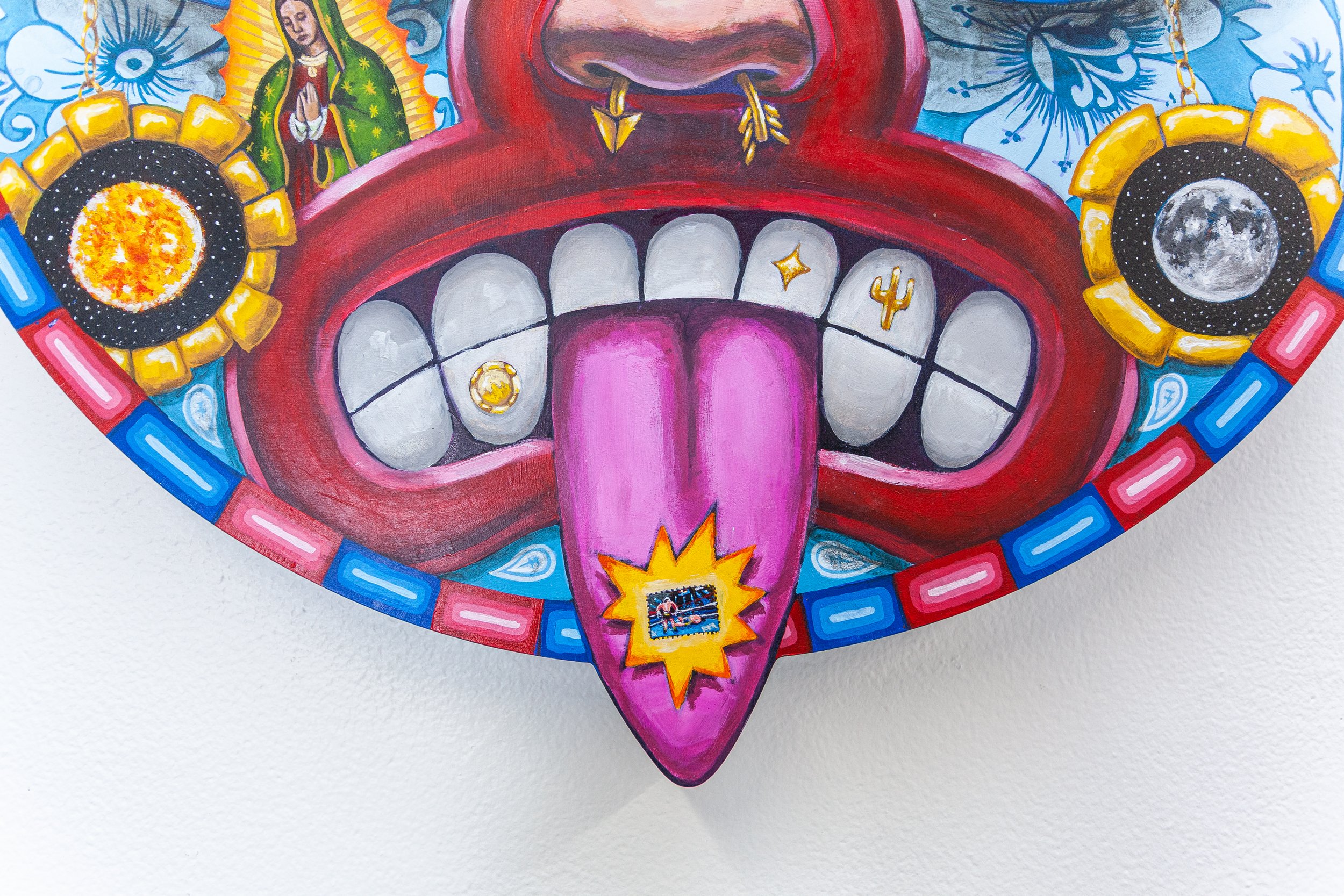
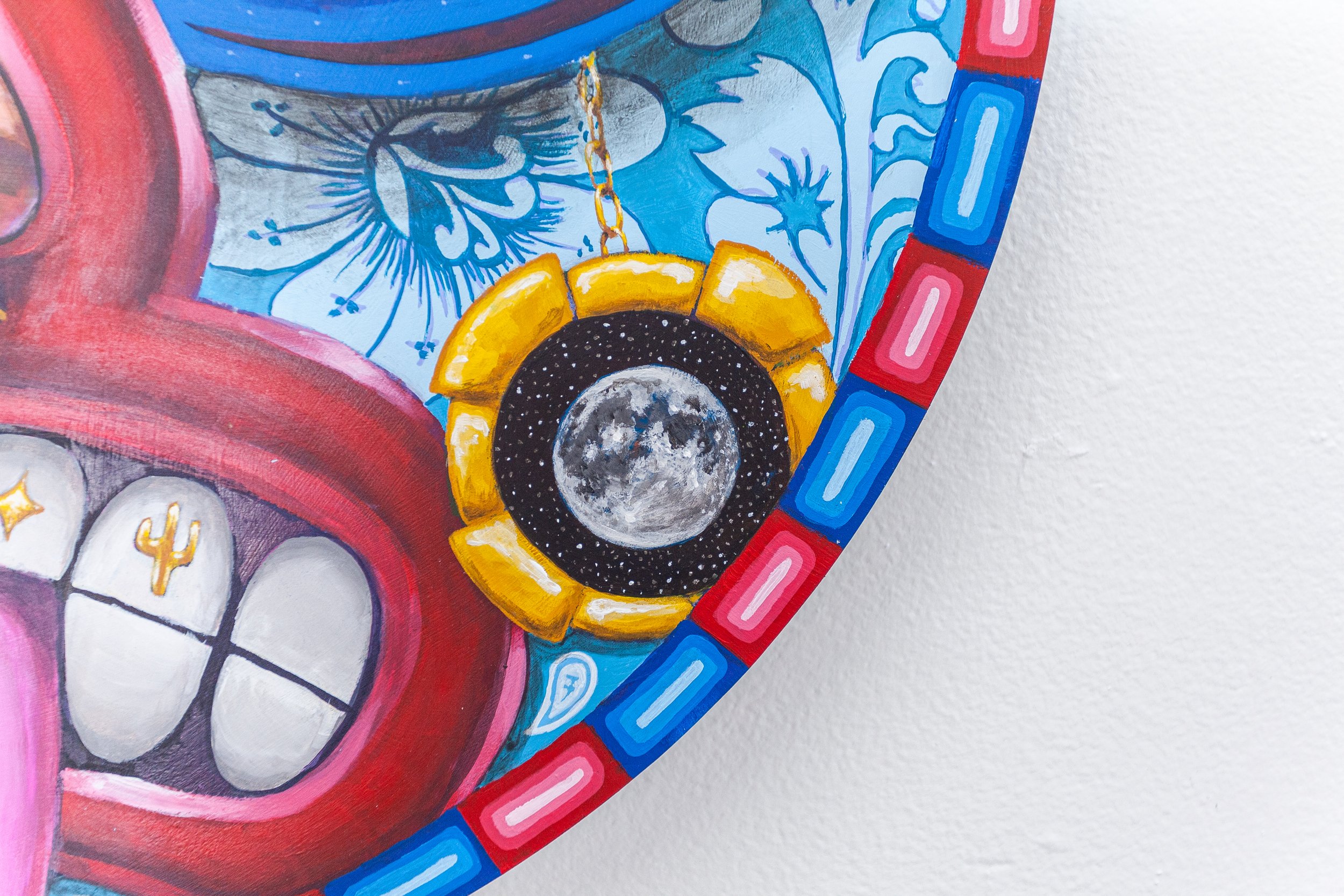







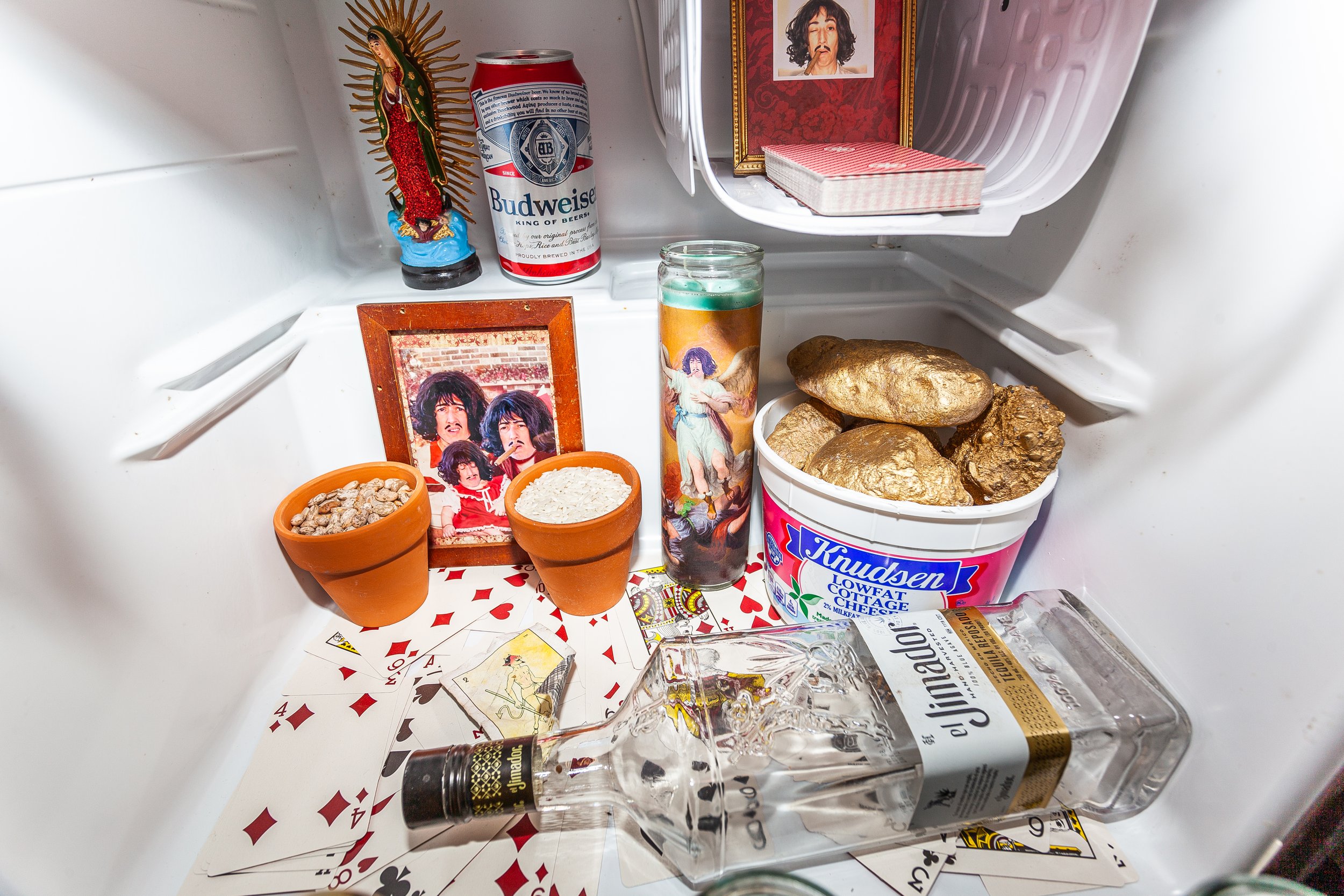













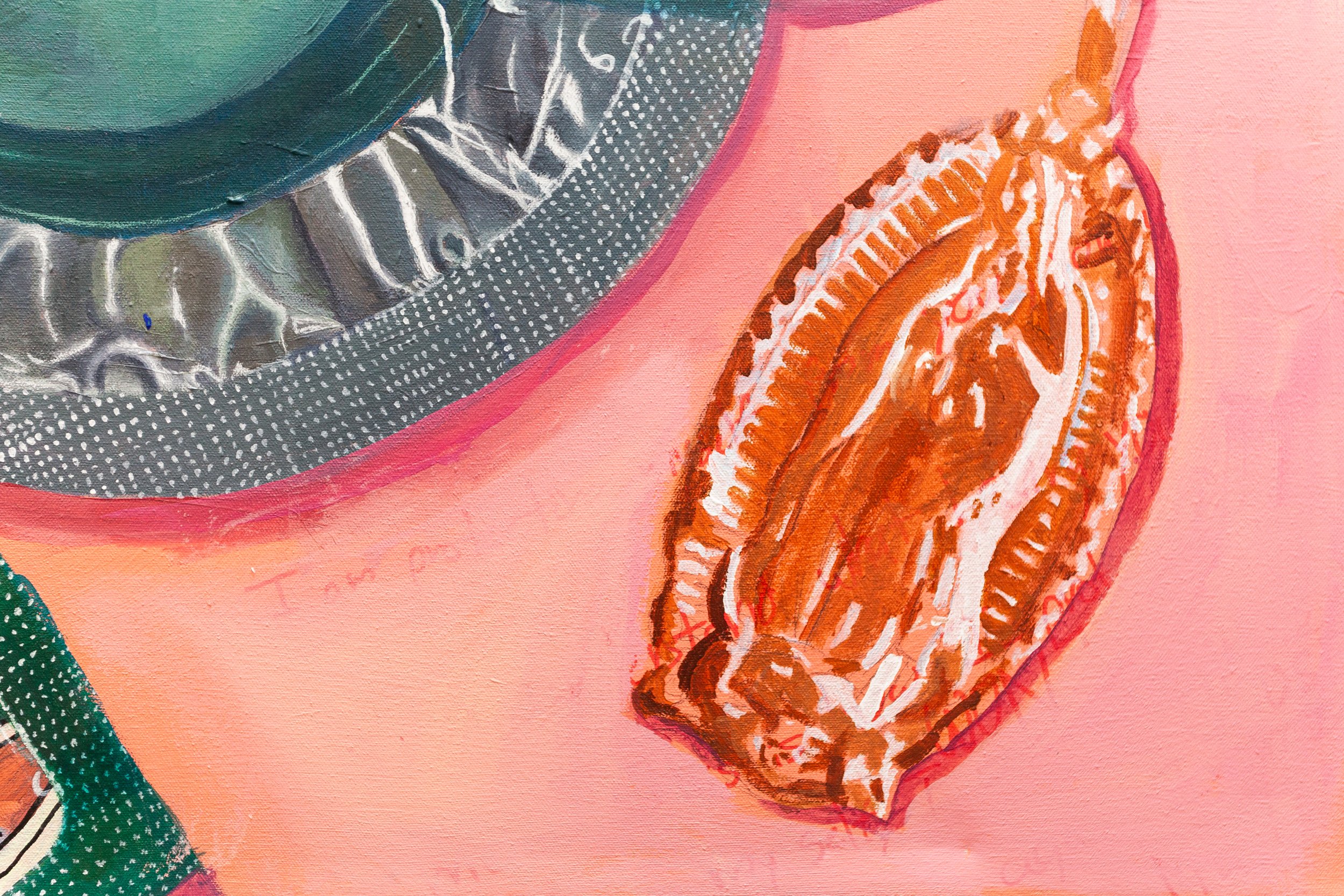









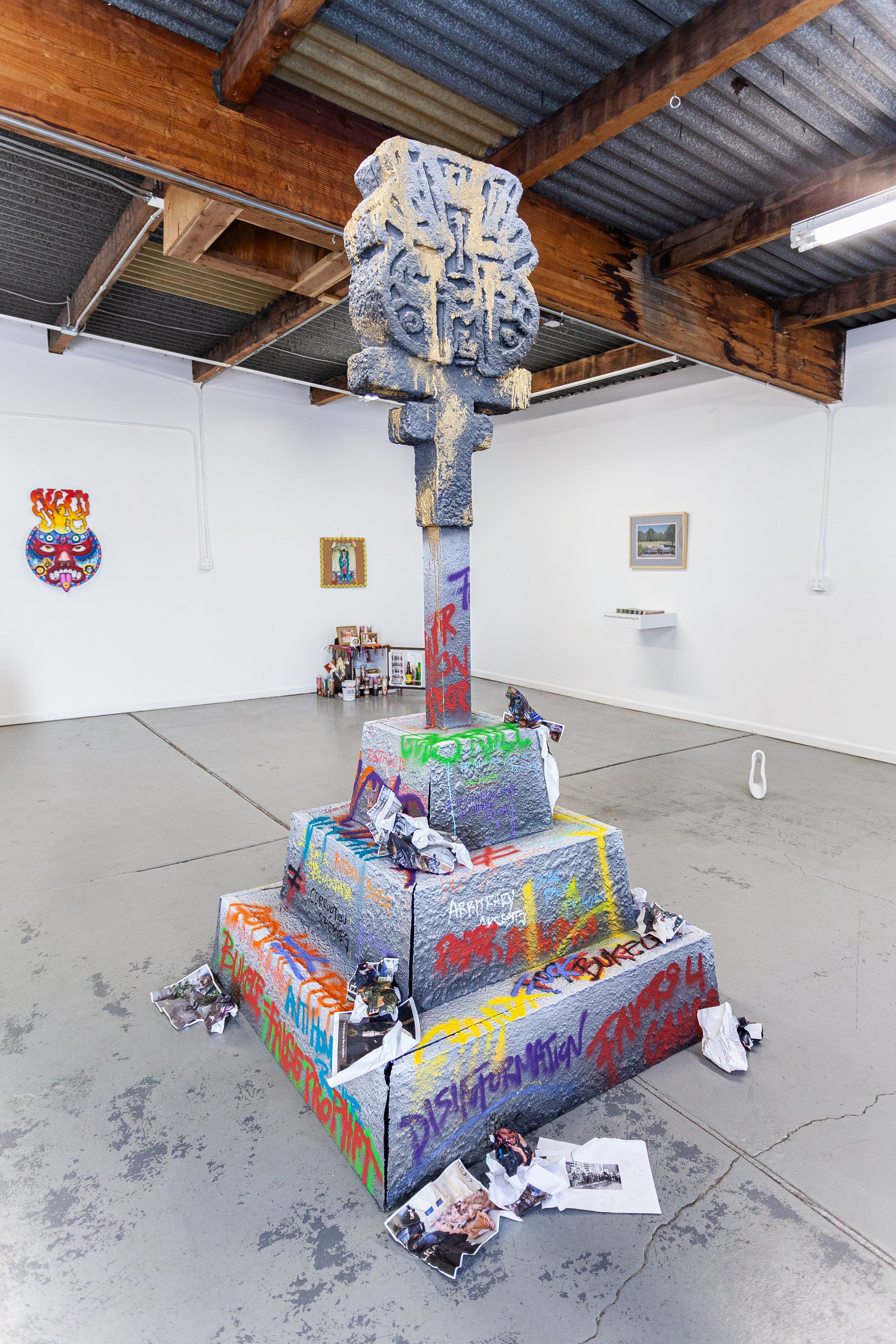

Hija/e/o/x (s) de Su-
2023
Co-Curated with Geo Uranda
Hija/e/o/x(s) de Su- a group exhibition that unites the latina/e/o/x communities of Reno and Las Vegas, Nevada. “Hija/o de tu madre” is a phrase that carries both positive and negative connotations expressed by authority figures in situations ranging from a pat on the back with disbelief to a more severe, well-deserved scolding. The phrase translates to “daughters/sons of your...” but more closely relates to the idiom “son of a bitch.” This nostalgic phrase sets up the concepts that drive the works of the artists, reflecting on their past experiences in which they were called Hija/e/o/x(s) de Su-. These situations can be traced to a time in their adolescence when they challenged the cultural and societal expectations of the latina/e/o/x household. Hija/e/o/x (s) de Su- grants its viewer access to these moments of rebellion, tragedy, and mischief to find commonality through shared experiences.
To earn the moniker of Hija/e/o/x(s) de Su- you have to allow yourself to experiment, play, and be comfortable existing outside of the conventional. The artists featured in this project explore the concept through painting, photography, sculpture, performance, printmaking, drawing, illustration, and curating. The curatorial approach to the project was to match that energy, by establishing connections, posing questions, and challenging the conventional practices of curating an exhibition, culminating in a collaborative effort full of play and introspection that arrives at the conversation challenging societal, and cultural expectations.
Ceramics & Sculpture











Peda de los Dioses
Tri-Lab Label
2021-2024
I often look to Mesoamerican codices for inspiration, flipping through the pages of reproductions and archeological catalogs I am taken back by the splendor of the cultures of North and Central America. Filled with curiosity about the meaning of the objects and iconography present in the texts, to then wonder about the library of stories and the lessons lost as a result of colonization. A beer can label is the perfect place for an invitation for people to hold space and to share and swap stories.








































The Beautiful Game
2020-2021
Within my research I get hung up on or obsessed with an object/iconography/ritual, especially when there is a contemporary counterpart to compare it to; this dialogue of ancient and contemporary creates tension. For example, The Beautiful Game blends the contemporary sport of fútbol with the Mesoamerican ballgame. The presentation makes reference to the Mexica tzompantli (skull rack), a structure that displayed the skulls of war captives and those ceremoniously sacrificed by the Mexica. The display of human skulls was one way the Mexica legitimized their prowess over their tributary states. I relate this to my exposure to the culture of fútbol, as the sport and its games are weaponized by aficionados, eliciting nationalistic pride and conflict. My use of materials in this piece references the materials of the Mexica culture and their contemporary counterparts. I weaponized the pelota (ball) with obsidian in the same way Mexica warriors would their Macuahuitl (warclubs). This weapon was made to severely injure the opposing individuals on the battlefield, who would then be captured and sacrificed to the god of war, Huitzilopochtli. The use of red earthenware is attributed to the terracotta used by the Mesoamerican culture to make ceramic vessels and sculptures. The concrete pedestal serves as the altar where all of these concepts come together. The presentation is inspired by the tension created before a World Cup match, where the ball sits on a pedestal and the players from both teams stand in the locker room tunnel waiting to “battle” for ninety minutes on the pitch.





























iiiDALE!!!iiiDALE!!!iiiDALE!!!
2019
This piece featured a large-scale axolotl piñata tethered to a wooden piñata-ized depiction of the Mexica god Xolotl. I incorporated ancient Mesoamerican themes with the piñata. Piñatas are traditionally filled with candy, or fruit that explodes onto the ground as it is continuously bludgeoned by stick wielding children. As the piñata breaks, candy spills out, resulting in a mad dash to pick up sweets off of the floor. In my redux of this traditional game, I replaced the sweets with ceramic flint knives called tecpatl. These knives are part of the Mexica blood sacrifice ceremony. The anthropomorphic qualities of the knives serve as the conduit that feeds the Mexica gods. In this ceremony the tecpatl sips on the life force of humans, which feed the gods who maintain the world's existence. I conceptualized the tecpatl as culture candy that my audience would rush in to pick up. They were not instructed to do so, rather their experiences with the Mexican birthday party culture had conditioned them to, which in part is due to the Piñata game being adopted by the American culture.
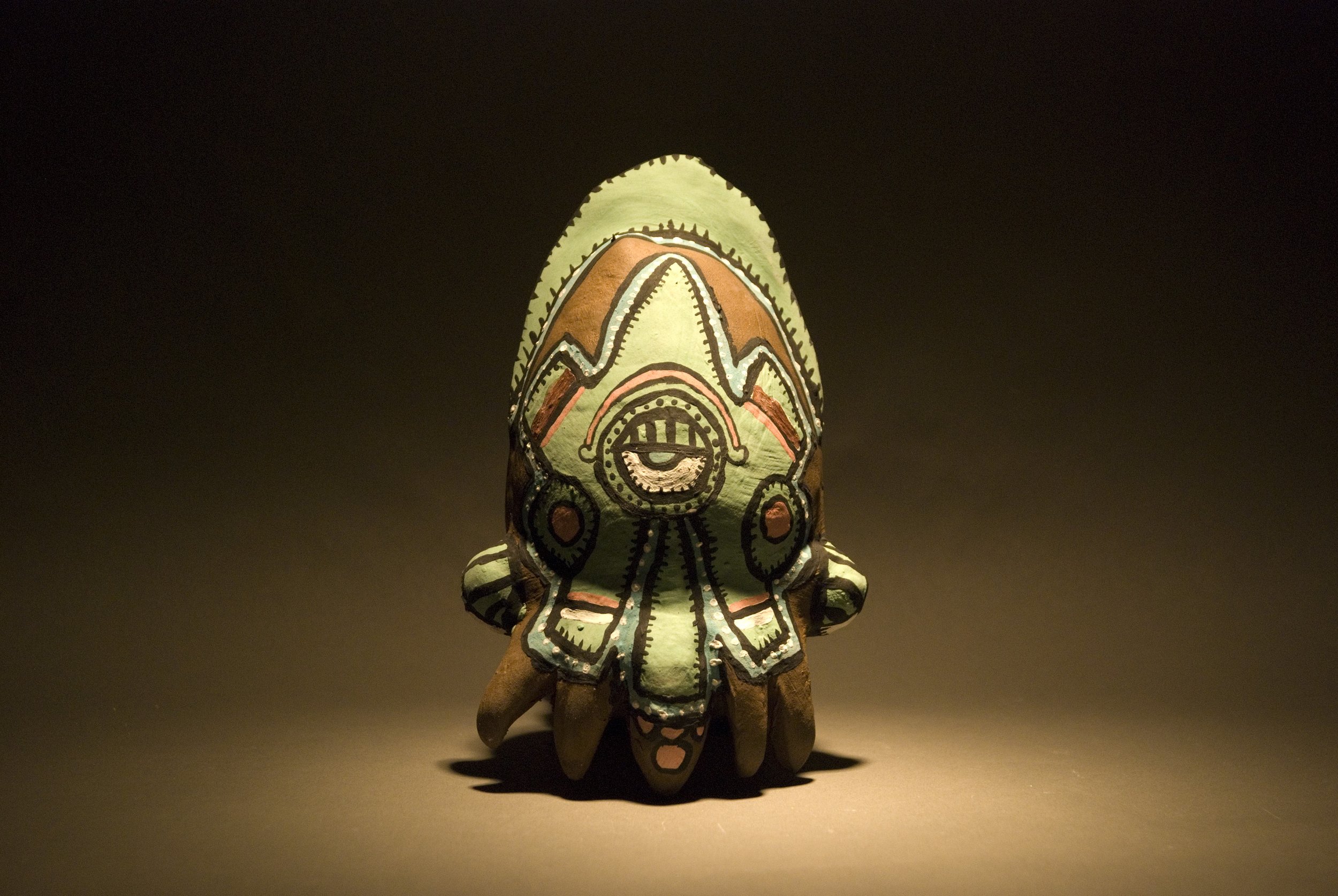







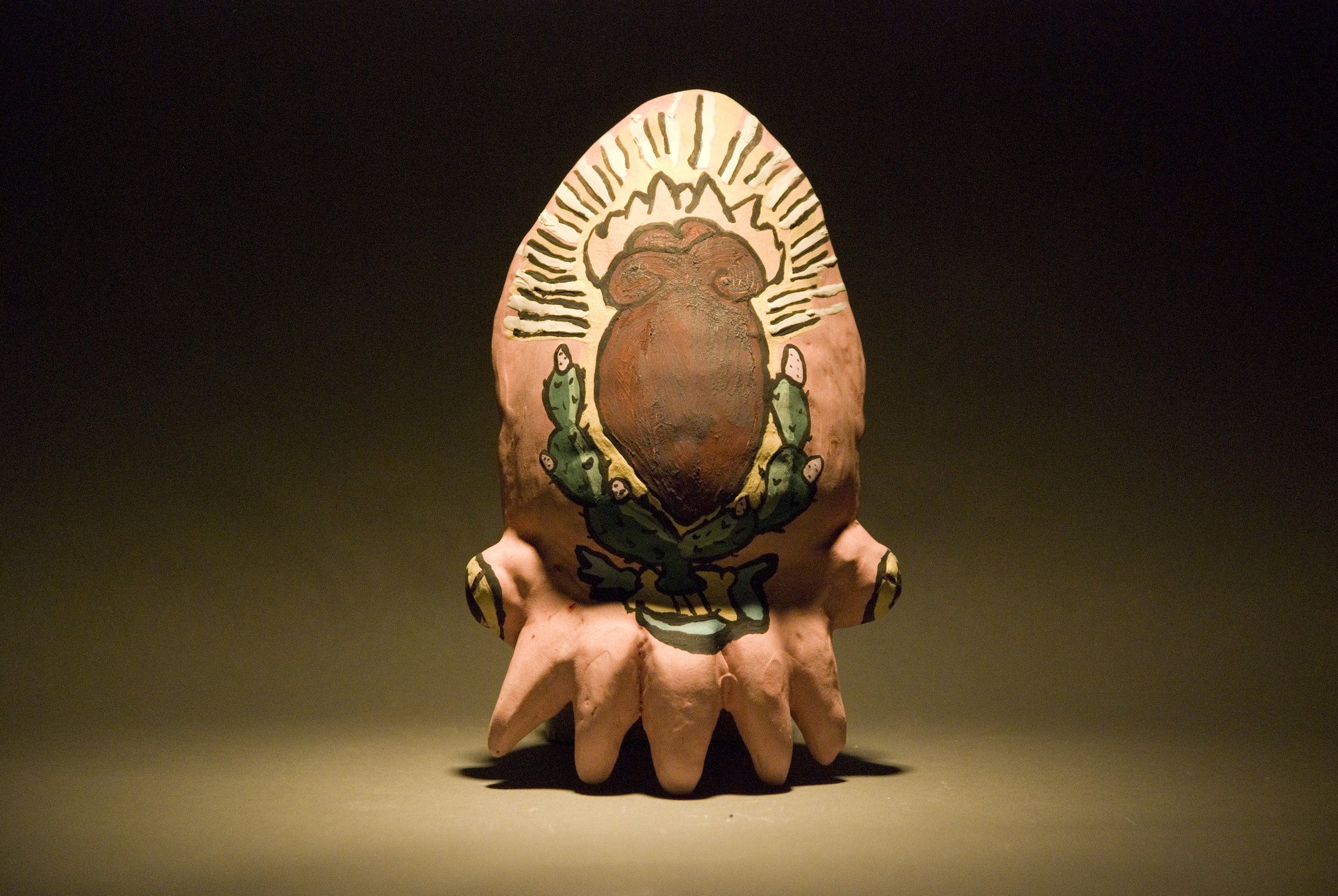
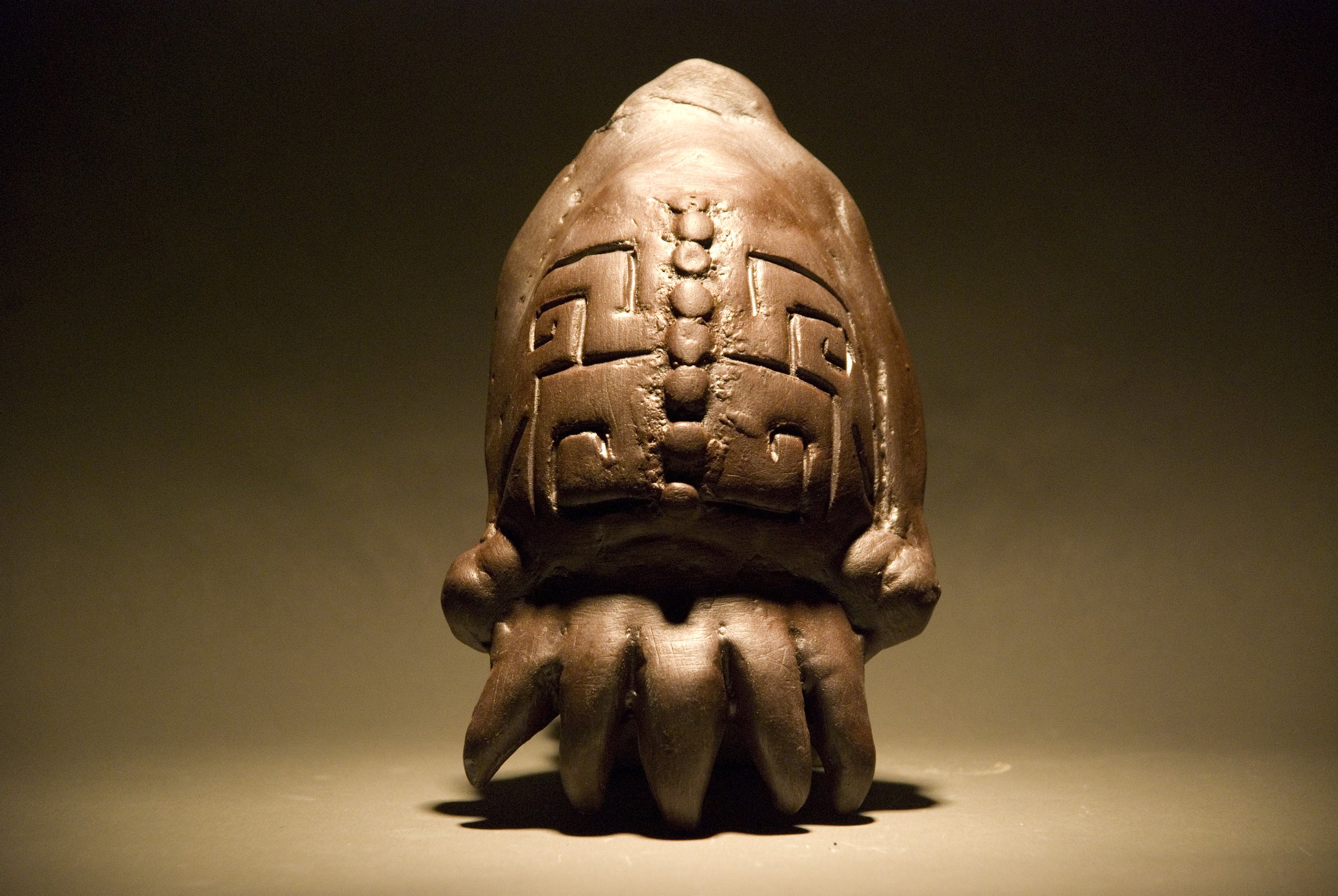














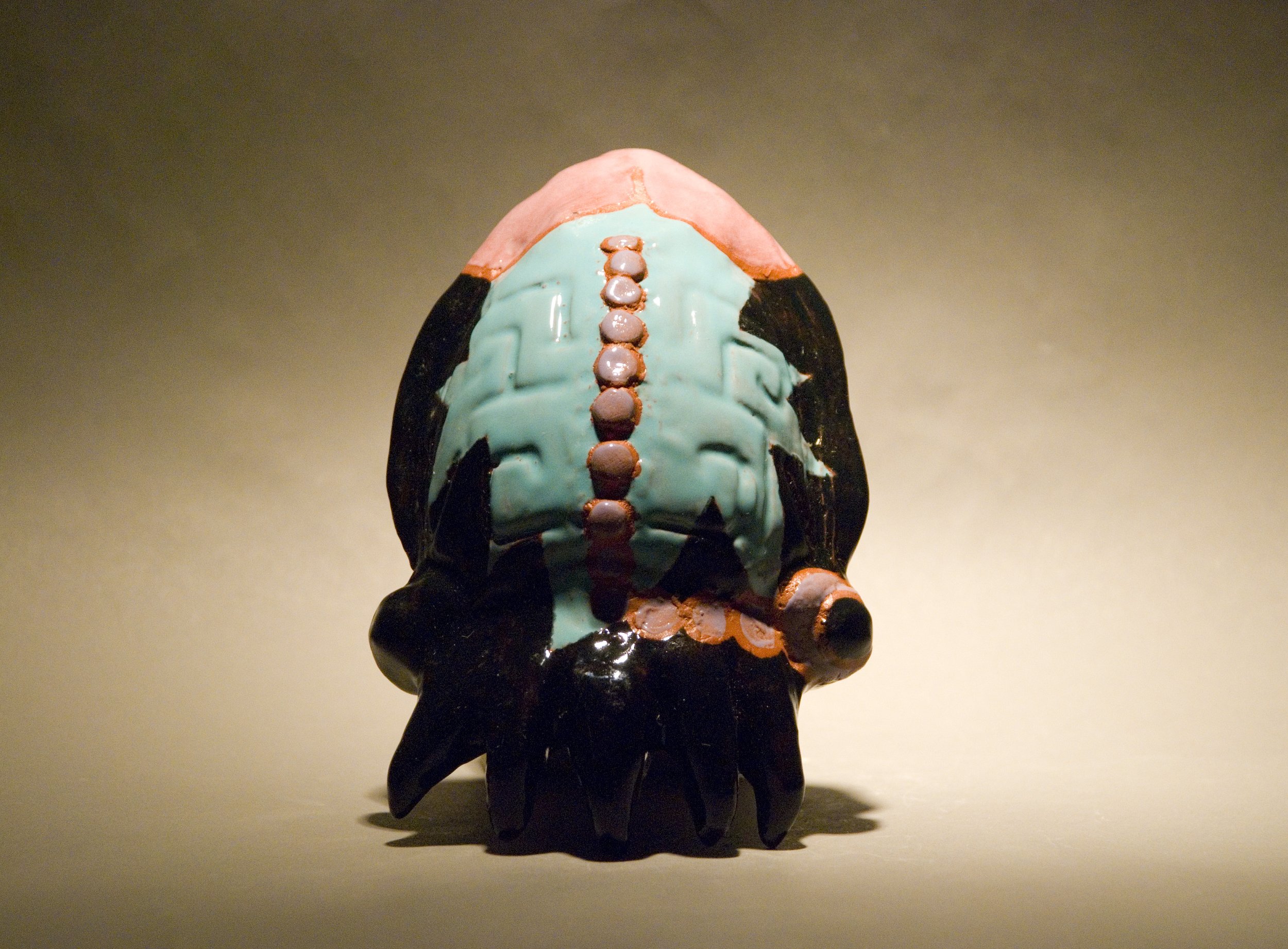



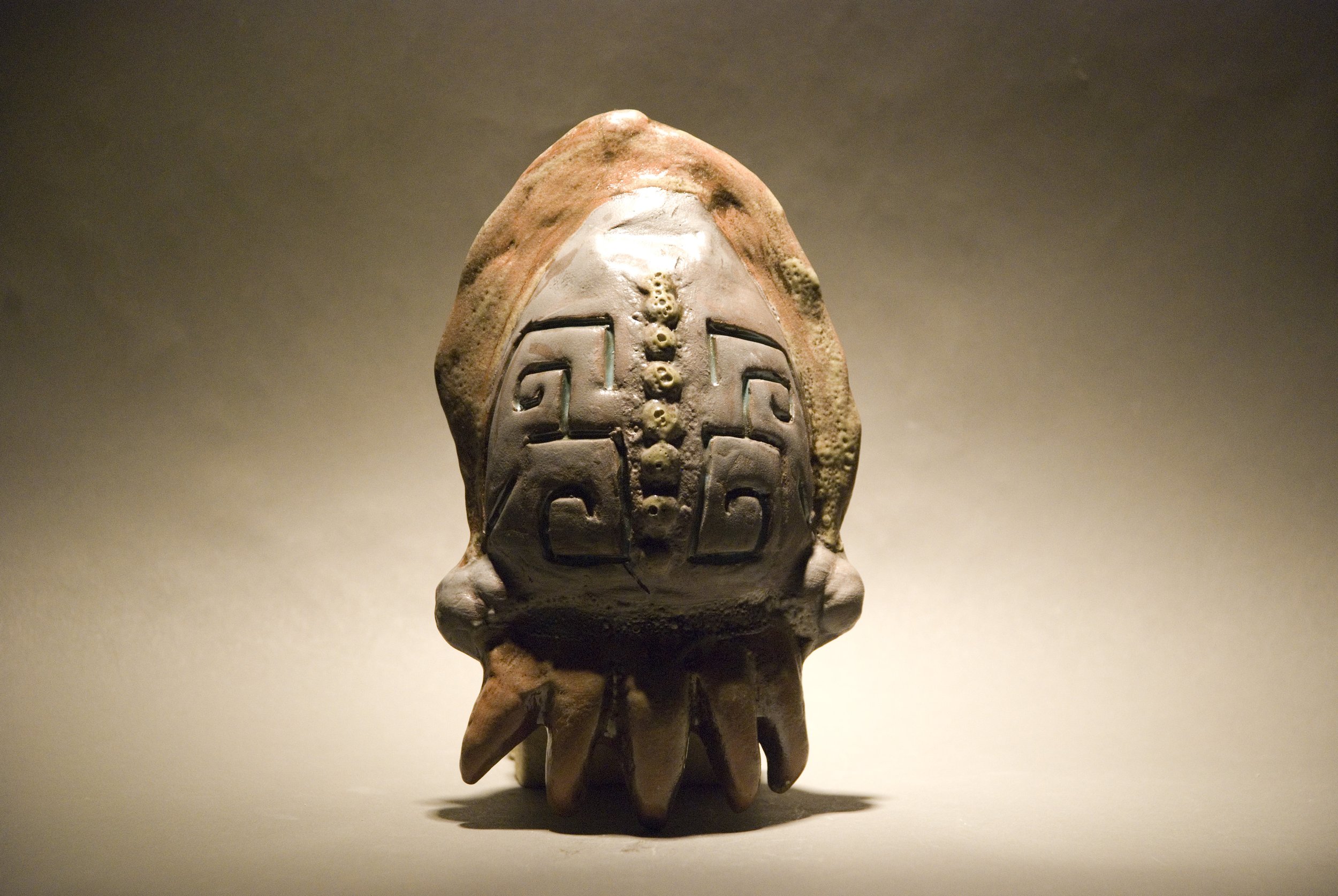







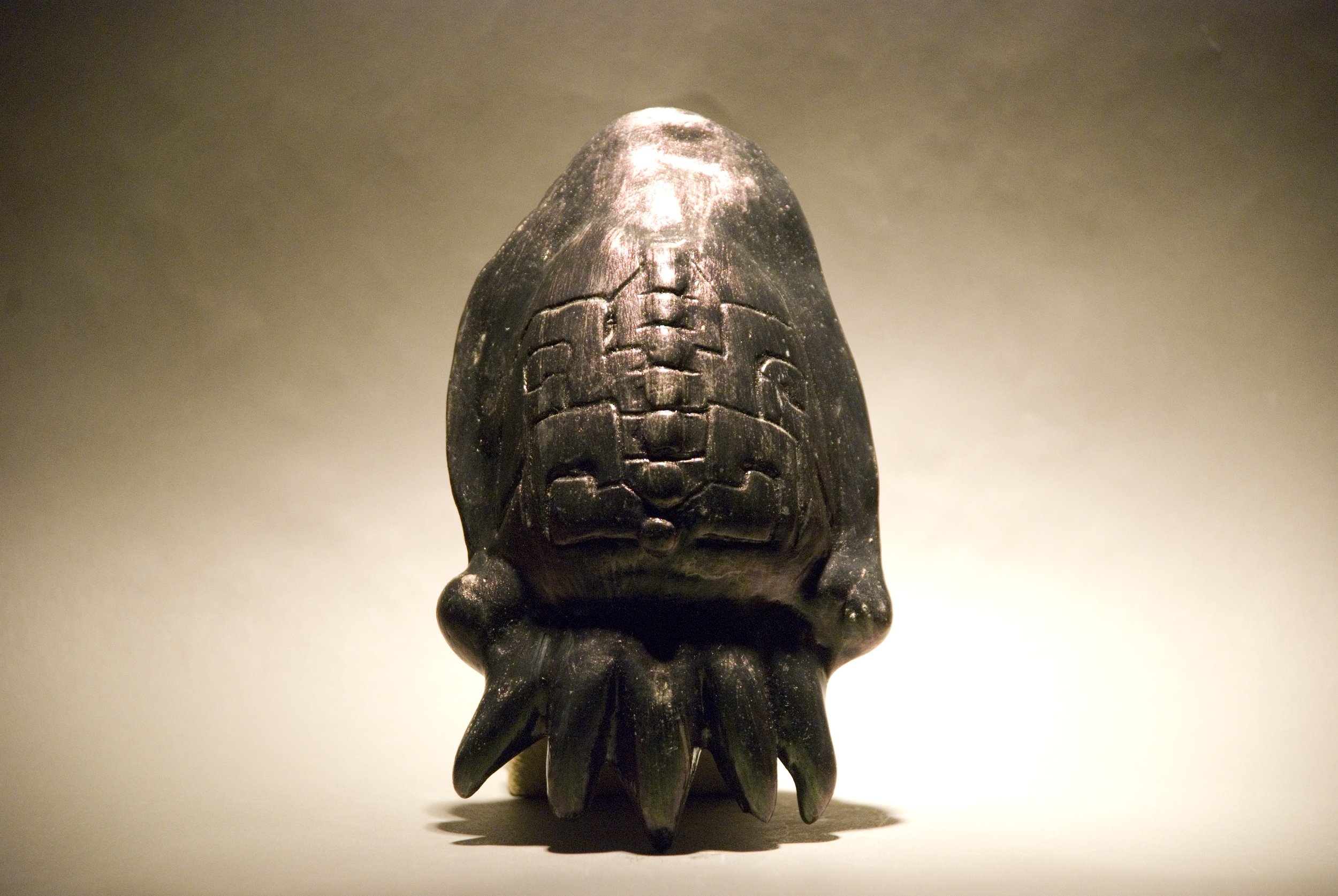



Cuttlefish
2019
McNamara Gallery
Cuttlefish have an extraordinary ability to camouflage and blend into their surroundings by mimicking texture, patter, and color. These organisms employ this skill to communicate with each other and to avoid predation. My fascination with these organisms has allowed me to participate in dialogue about survival with other artists. For this project I prepared terracotta cuttlefish forms, and invited artists to finish the work in their medium of choice or in a traditional ceramic fashion.
In collaboration with: Kara Savant, Hannah Huntley, Riley McKinney, Shara Sinatra, Nolan Sheets, Miriam Martinez, Gweylon Leaf, and Cullen Wegman
Performance
iiiDALE!!! iiiDALE!!! iiiDALE!!!
2019
Student Gallery South University of Nevada Reno
Reno, Nevada
El Vendedor
2021
Wells Avenue Reno, Nevada
Fiber Art




























Armadura & Para el Sargento
2024
Part of Tight Knits curated exhibition Hand Wash Only, my mother and I were invited to exhibit work, I felted a jersey and she crocheted an Mexica eagle headress, both works are inspired by war regalia.













Needle Felting Workshop
UNR Sculpture














Cōātlīcue Transformed
2021
Cōātlīcue Transformed pays homage to Saturnino Herran's painting of the same name and depicts the Mexica Goddess in the style of la Virgen de Guadalupe. This work of art explores the roots of these cultural icons.









Caninos Canijos
2021
Caninos Canjos is inspired by the Mexica creation myth of humans, plate 56 of the Codex Borgia, and the contemporary Mexican-American identity.
The original plate is of the god of death and ruler of Mictlan, Mictlantecuhtli standing back to back with Quetzalcoatl. The symbolism of these two figures is of life and death, as they play a key role in the creation myth of humans for the Mexica. In this creation story, Mictlantecutli allows Quetzalcoatl to travel through Mictlan to gather the precious bones that were used to create humans.
My recontextualization of plate 56 replaces the Mexica gods with a Xoloitzcuintli and a Coyote. The Mexica believed that the Xoloitzcuintli, known as the Mexican Hairless Dog served Mictlantecuhitli, by guiding the souls of the dead towards Mictlan. In contemporary culture, this canine continues to play its role as a guide for the souls of our lost loved ones, while the Coyote is a term used for a human trafficker. Coyotes transport and guide immigrants looking for a better life and opportunity for their families in the United States.
As the son of immigrants, I was raised in a place where I had no knowledge or connection to the ancestral, and contemporary culture of my family; rather an amalgamation of Mexican and American. This created an identity crisis within my sense of self that I remedy by learning about Mesoamerica and its people. Through research, I explore and observe the similarities between ancient and contemporary culture to create works of art that are informed by ancient traditions and contextualized through a contemporary perspective.
Mutual Aid/Fundraising

















































Skull Auction
2020
The Ceramics Society of UNR raised funds for their trip to NCECA through an online auction. For this work we prepared Slip casted skulls and invited our peers and mentors to decorate the ceramic skulls. Each participant brought their own unique style to the project.

















The Burrito Show
Co-Curated with Pax Robinson
2019
Ferrino Distillery
A project formed out of conversation with Artist/Writer Pax Robbinson at a workshop at the Holland Project, the Burrito Show invited artists to make works centered around burritos. The artists were given the option to work with their own materials or use a ready made plaster burrito casted from silicone. Works were sold/auctioned off for the mutual aid group The Reno Burrito Project.